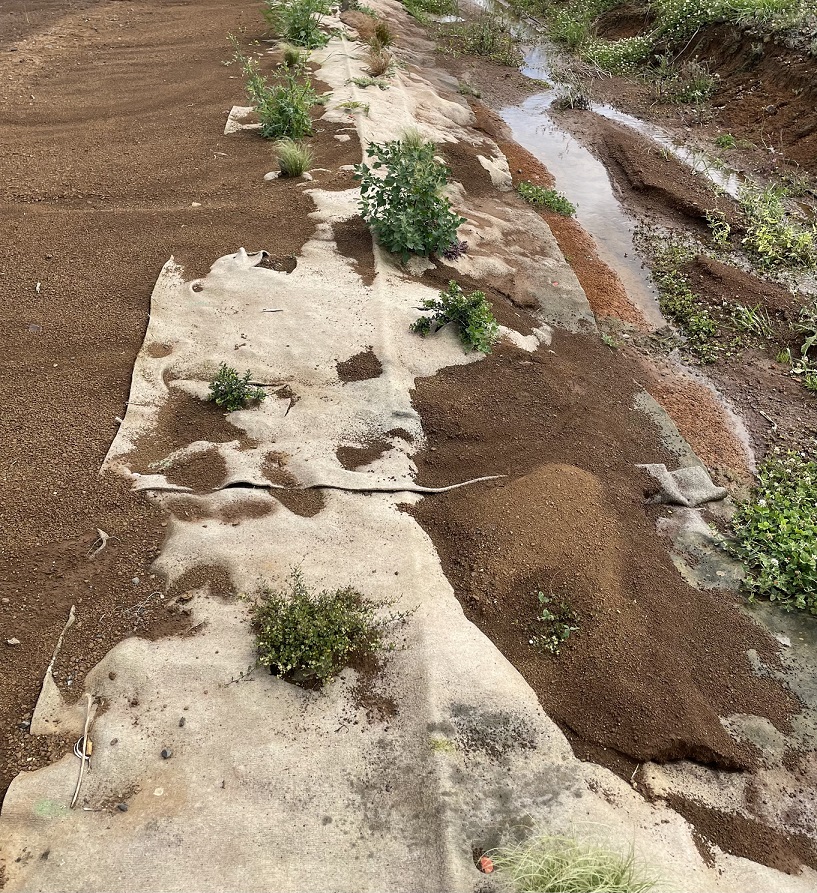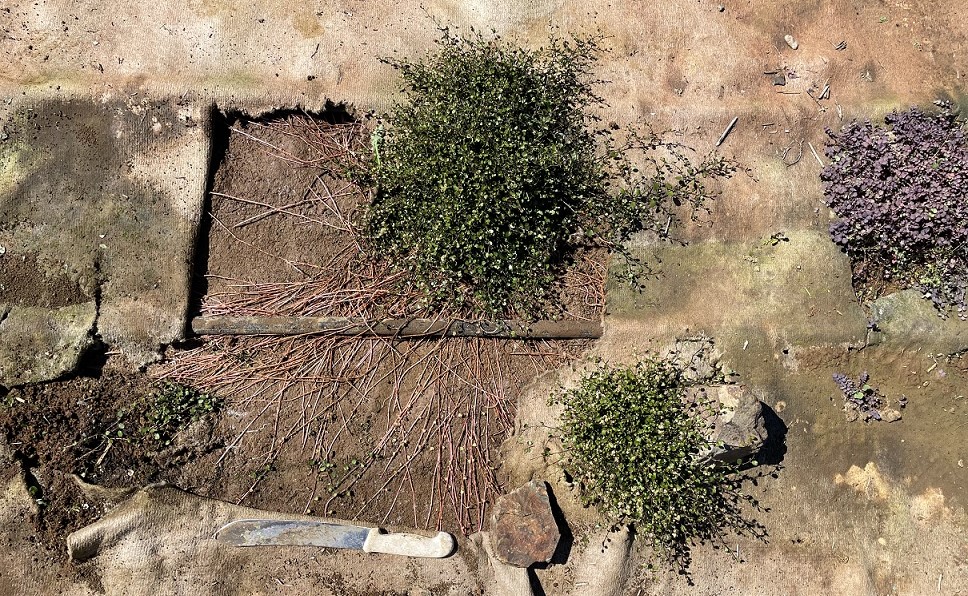Months of rain, including a 260mm overnight deluge, has created challenges for a Vegetables NZ-A Lighter Touch project trialling native planting on vegetables farm.
The project, located at the Pukekohe demonstration farm, is looking to increase the abundance of beneficial insects on vegetables farms by planting natives to generate a year-round source of shelter, nectar, alternative food and pollen (SNAP).
The project’s goal is to provide growers with a resource they can use to increase the biodiversity on their farm, resulting in more beneficial insects, fewer insect pests in crops, and less insecticides required.
But the January downpour of 260mm of rain overnight, followed by a second severe weather event in February, and months of rain since, has generated some learnings for those running the demonstration.
The volume of rain was such it washed nearby onion crops out of the ground, and a quarter of the lettuce crop was lost due to soil being washed over the plants. In the pumpkin crop, the soil washed out of the wheel tracks and from around the plants onto the neighbouring native planting, covering much of the biodegradable wool matting with anywhere from 2mm to 25mm of top soil.

The mounds of dirt washed on to the weed mat after the floods. Credit Olivia Prouse
Despite the torrent of water flowing across it, the wool matting stayed in place even on steep slopes such as the banks of drains, limiting erosion. Most of the native plants survived being water-logged, but the amount of soil dumped on top of some areas of the weedmat led to a major weed problem developing, resulting in the loss of many of the native plants in the following months.

The only area where the water ripped the weed mat, which otherwise held together well despite the volume of water. Credit Olivia Prouse
In addition, the volume of rain resulted in the weedmat in water-logged areas breaking down at a much faster rate. It was expected to last two to three years, sufficient for the native plants to establish, but in wet areas it will likely need to be replaced within 12 months.

The left image shows areas of planting subjected to constant wet conditions and soil covering the wool mat area, while on the right, in an area not subject to flooding, the plants and weed mat are performing well. Credit Olivia Prouse.
In contrast, in drier areas of the farm, the wool mat is holding together well, effectively suppressing the weeds and the native plants are growing well. It has continued to provide a habitat for beneficial insects over winter, with a minimum of five and as many as nine natives species flowering each month through June, July and August.
This demonstrates, even in the first year of planting before the native shrubs start flowering, the groundcovers are providing good impact in terms of providing a source of SNAP (shelter, nectar, alternative food and pollen). Beneficial lacewing juveniles have been sighted living in the foliage, eating aphid species, ready to move into the neighbouring spring lettuce crops to predate insect pests as they appear.
As the first anniversary of the project approaches, those involved in the project are identifying lessons learnt. When establishing planting beside drains or waterways, it is important to understand the water flow movement in the paddock and create escape routes for water from the paddock to reach the drain without flooding the beneficial planting.
One approach would be to build a soil bund between the crop and the waterway with water escape channels cut into it. The weedmat and plantings would cover the bund, and herbicide would be used to control the weeds in the water escape channels, effectively creating a barrier to funnel excess water from the paddock down the side of the bund and out the escape channels.
Another lesson from the demonstration is around the use of herbicide for weed control on the weedmat. For single stemmed plants such as shrubs or small trees, it is easy to spray around the natives. However, for this project there was a desire to establish groundcovers to avoid the height of native plants in areas bordering crops interfering with the use of farm machinery.
The difficulty when using herbicide with groundcover planting is that the plants spread underneath the wool mat and come through as the woolmat breaks down. However, any herbicide spraying of weeds growing on top of the woolmat will also go through the woolmat and kill the native groundcover not visible, but spreading underneath.

The extent of the native plants new runner growth ís revealed when the weed mat is cut away. Credit Olivia Prouse.
A solution to this problem is to increase the rate of groundcover planting from two plants per square metre to four plants, which would enable the groundcover to establish more quickly, cover the weedmat and suppress the weeds, therefore making the herbicide use unnecessary.
Another takeaway from the demonstration is some hand-weeding is necessary as the natives are getting established to control weeds growing up through the planting holes.
Learn more about this project as it progresses in the Our Projects section of our website.